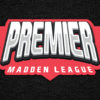The Eagles defeated the Commanders 55 – 48, handing Washington a rare home defeat despite their high‐powered offensive showing.
Offensive stats at a glance:
- Washington racked up 598 passing yards and only 45 rushing yards.
- Philadelphia tallied 450 passing yards and 87 rushing yards (totaling 537).
- The turnover battle tilted sharply: Washington had 0 takeaways; Philadelphia forced 2.
- In the red zone: Washington converted 4 TDs out of 8 trips (50%); Philadelphia converted 3 TDs of 8 trips (~37.5%).
Passing & receiving leaders:
- For Washington, QB J. Daniels went 26/33 (78.8 %), threw for 625 yards, 7 TDs and 1 INT, with a passer rating of 145.7.
- For the Eagles, QB T. McKee went 27/31 (87.1 %), threw for 450 yards, 6 TDs and 0 INTs, rating 158.3.
- On the receiving end, for Washington:
- J. Lane had 6 receptions, 196 yards, 2 TDs.
- J. Croskey‑Merritt 6 catches, 130 yards, 2 TDs.
- L. Cager 3 catches, 84 yards, 1 TD.
- For Philadelphia:
- J. Dotson had 5 catches, 144 yards, 2 TDs.
- J. Metchie III 7 catches, 86 yards, 2 TDs.
- D. Smith 5 catches, 136 yards, 1 TD.
Key defense & special teams notes:
- Philadelphia’s defense logged 4 sacks, while Washington managed none.
- On the defensive stat sheet, for the Eagles:
- J. Uche recorded 4 tackles and 1 sack.
- A. Jackson notched 3 tackles and 1 INT.
- On Washington’s side, B. Wagner stood out with 3 tackles and 1 INT.
What the Stats Tell Us
- Offense explosion. Washington threw for nearly 600 yards, which is enormous — yet still gave up 55 points. This suggests that while their offense was humming, their defense could not get stops.
- Eagles’ balanced complement. The Eagles, by comparison, were slightly more modest in total yards but made key plays: forcing turnovers and getting pressure on the quarterback.
- Red zone woes. Philadelphia only converted 37.5% of red zone trips into TDs — not ideal — yet their overall volume and defensive plays made the difference. Washington, with 50% conversion, still came up short.
- Turnovers & sacks matter. The zero sacks allowed by Washington suggests their offensive line held up; but giving up 4 sacks and failing to force turnovers really hurt.
- Pass-heavy gameshift. With Washington’s rushing yards so low (45), they leaned heavily on the pass. That type of imbalance can lead to quick scores but also quick failures if the defense adjusts.
- Big plays in receiving. Both teams had receivers breaking 60-yard receptions and multiple TDs — showing that chunk plays were a major component.
Context & Implications
- For the Eagles, this win solidifies a 16-1 record, showing dominant consistency heading into any postseason.
- For Washington, being 13-4 and still giving up 55 points is a warning sign: high scoring wins are fun, but you also need your defense to make stops in crunch time.
- The nature of the matchup suggests both teams might lean heavily on aerial attack in tournament play — but the one with a defense that can pivot and force mistakes will likely fare better.
- From a viewer’s or league-manager’s perspective, games like this drive excitement: big numbers, lead changes, lots of scoring. But if you’re a coach, you might be asking: how do we tighten up defensively?
Takeaway for Fans & Coaches
For fans: Sit back and enjoy the fireworks. Thanks to all that passing and chunk plays, it was a game filled with big numbers and highlight-worthy moments.
For coaches:
- Washington: You can score with anyone — but when you give up 55, it’s hard to win. Work on defensive adjustments, third-down defense, and red-zone stops.
- Philadelphia: Your offense is efficient, and your defense made the difference. Keep pressuring the quarterback, forcing turnovers, and you’ll continue to be a threat.
- In both cases: Rushing remains under-used. If you can balance the attack, you’ll be harder to defend and less dependent on big-play passing.



